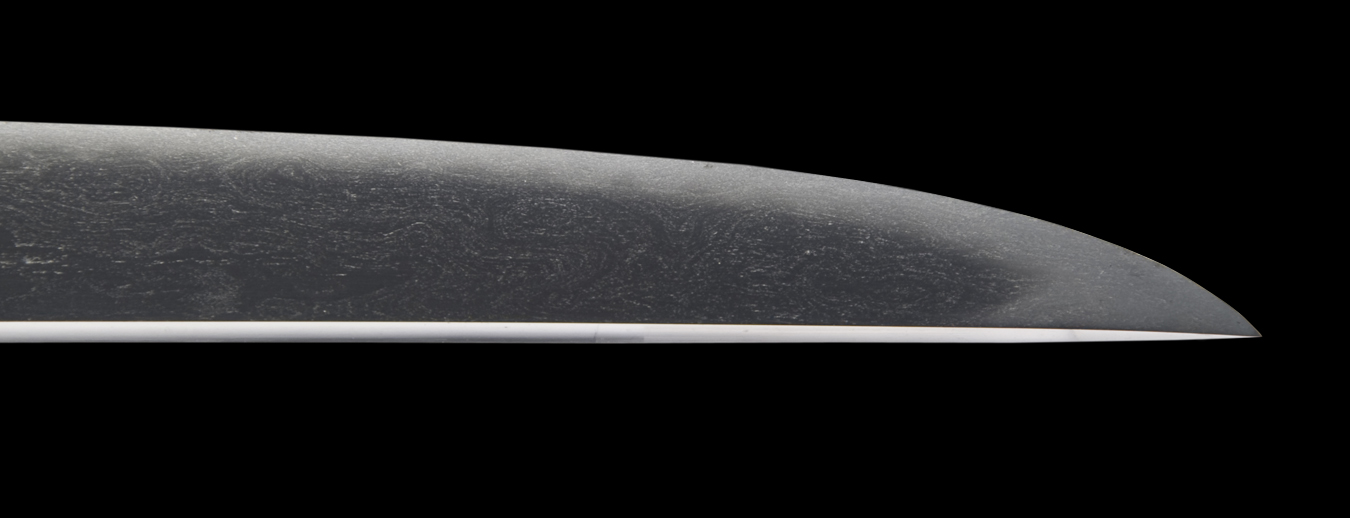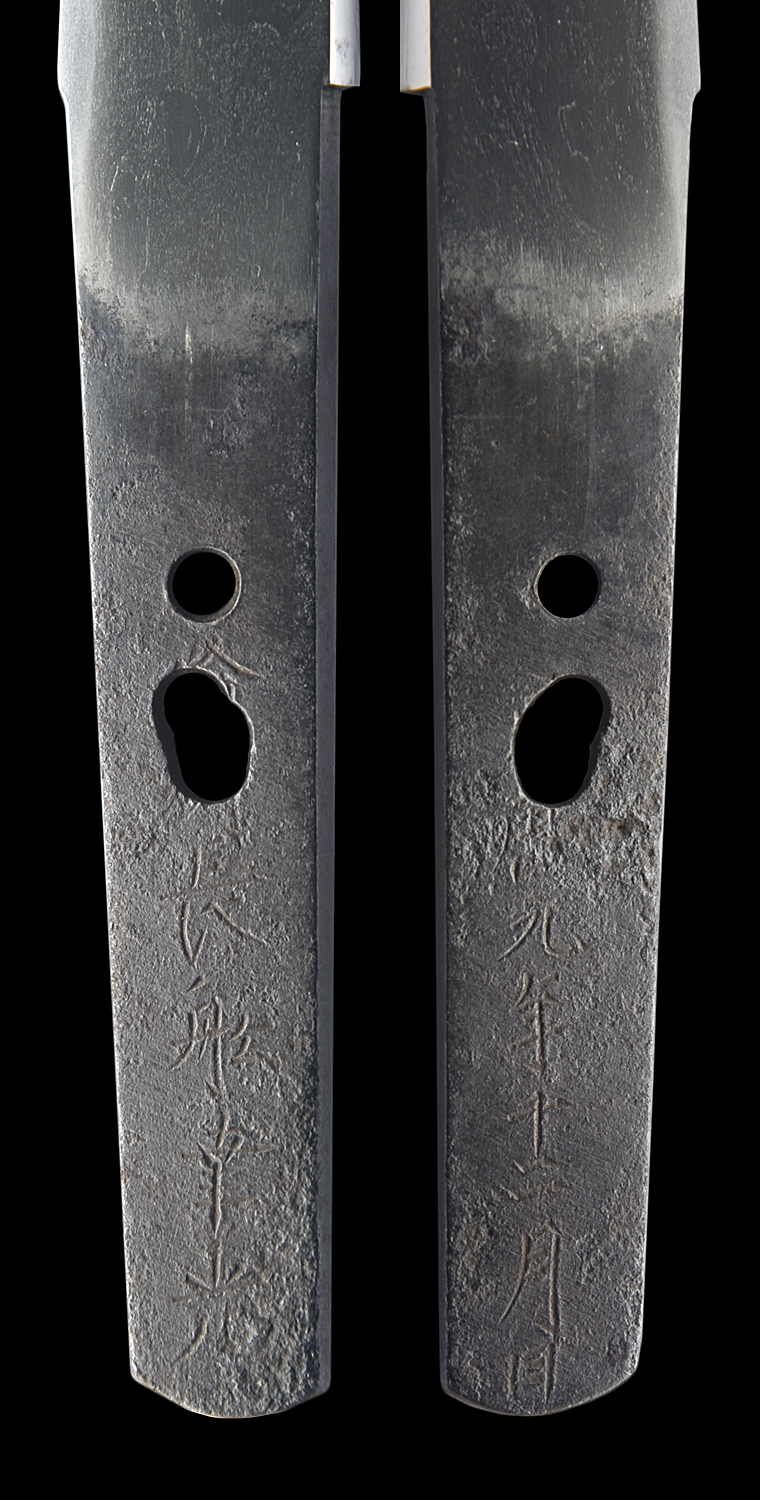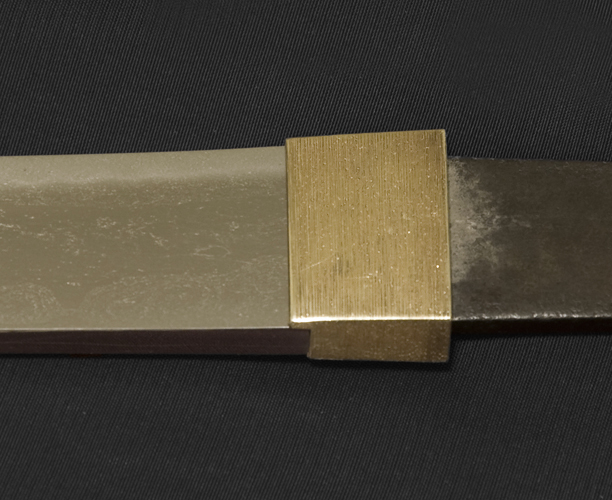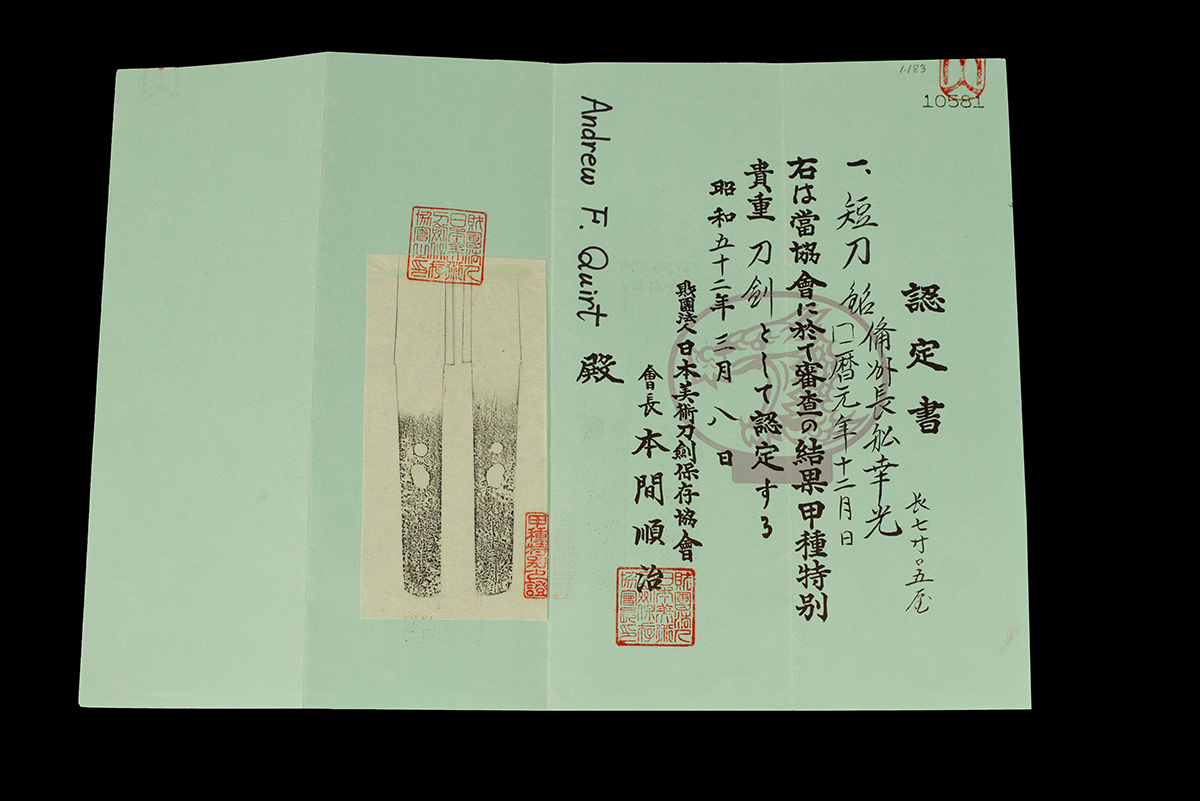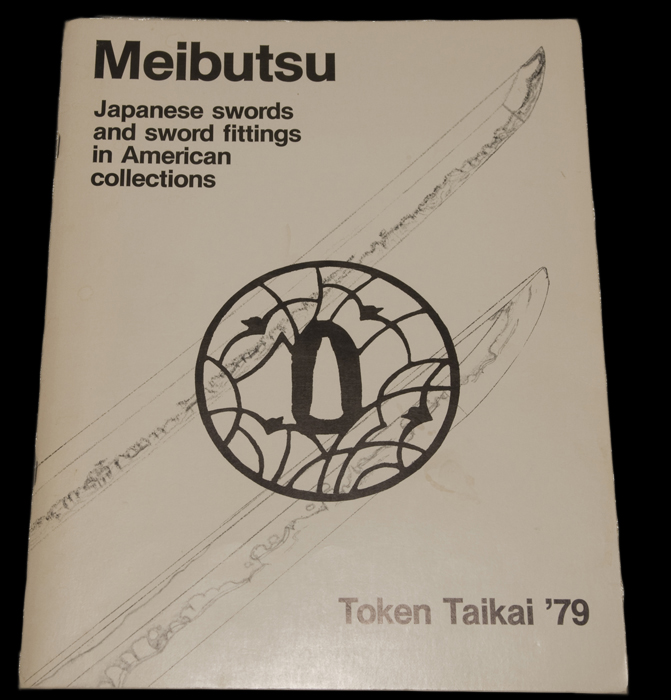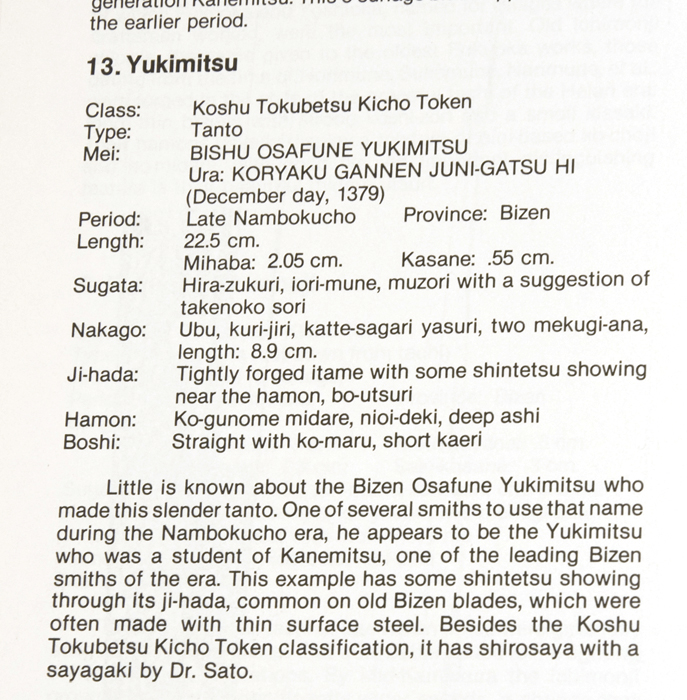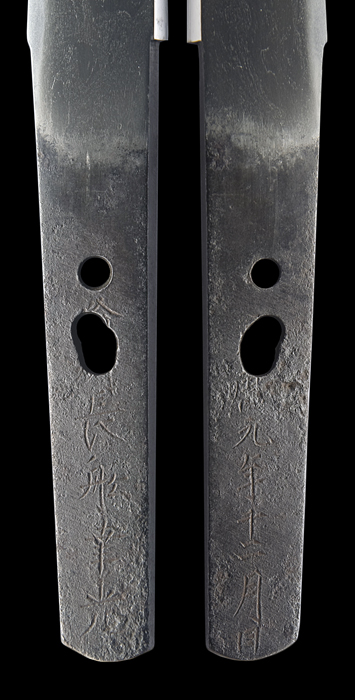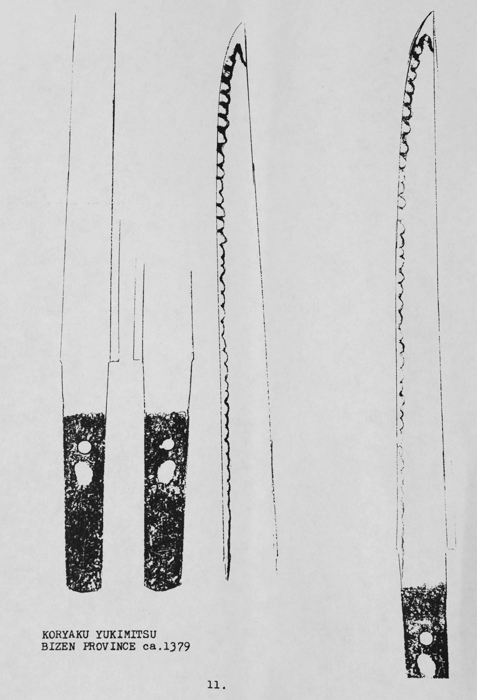|
| |||||||||||||||||||||||||||||||||||||||
Hamon : Nioi-deki ko gunome. Tight and soft nioi-guchi. The gunome are even in height and size resembling jizuba. There are many ashi and they are mostly forward slanting.
Boshi : Omote is tsukiage boshi with a short kaeri. The ura is ko-maru with a short kaeri.
Kitae : Itame and mokume mixed. The jigane is nagareru and flowing. Ji-nie is present. There is shintetsu. Bo utsuri can be seen on both sides directly above the nioi guchi.
About this sword : This is a Nambokucho jidai tanto by the first generation Bizen Yukimtisu. He was active around the Koryaku nengo (1379 -1381). This example is rather precious because it is signed and dated 1379. Yukimitsu was of the Kozori branch of the Bizen school. There were nine generations in this line, extending to the late Muromachi period. The condition of this blade shows the honest use of warring times like the Onin wars and the Sengoku jidai. There is shintetsu showing on the surface of the blade as shown in the photos. The nakago is slightly machi-okuri with an ubu jiri. The importance of signed and dated works of this age can not be overstated. This blade was awarded a Koshu Tokubetsu Kicho paper by the NBTHK in 1977. This paper was one level below Juyo at that time and commonly referred to as a "blue paper". It is also accompanied by a saya-gaki by Dr Kanzan Sato dated 1971. This tanto was featured in the Japanese Sword Society of the United States vol 8, no 6 newsletter in 1976 and published by the Token Taikai in their "Meibutsu Japanese Swords and Sword Fittings in American Collections" in 1979. A gold foil habaki and storage bag are also included. A charming signed and dated Bizen tanto with a rich history of publication, Kanzan Sato's sayagaki and a Kosho Tokubetsu Kicho paper.
SOLD


